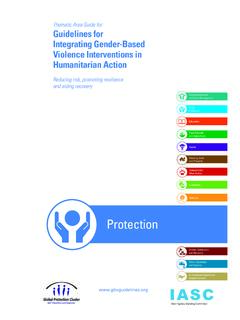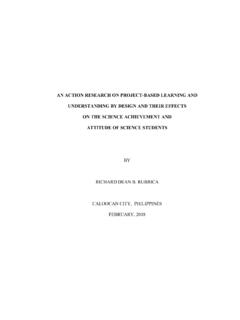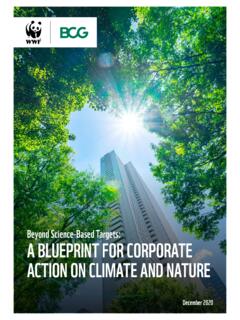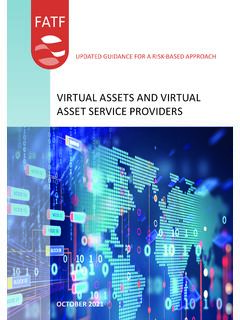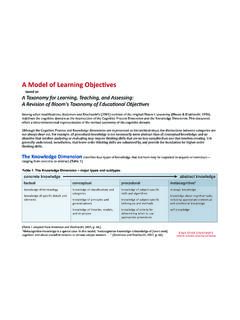Transcription of Trade-Based Money Laundering - Financial Action Task Force
1 Trade-Based Money Laundering Trends and Developments December 2020. The Financial Action Task Force (FATF) is an independent inter-governmental body that develops and promotes policies to protect the global Financial system against Money Laundering , terrorist financing and the financing of proliferation of weapons of mass destruction. The FATF Recommendations are recognised as the global anti- Money Laundering (AML) and counter-terrorist financing (CFT) standard. For more information about the FATF, please visit This document and/or any map included herein are without prejudice to the status of or sovereignty over any territory, to the delimitation of international frontiers and boundaries and to the name of any territory, city or area. The goal of the Egmont Group of Financial Intelligence Units (Egmont Group) is to provide a forum for Financial intelligence unites (FIUs) around the world to improve co-operation in the fight against Money Laundering and the financing of terrorism and to foster the implementation of domestic programs in this field.
2 For more information about the Egmont Group, please visit the website: Citing reference: FATF Egmont Group (2020), Trade-Based Money Laundering : Trends and Developments, FATF, Paris, France, 2020 FATF/OECD and Egmont Group of Financial Intelligence Units. All rights reserved. No reproduction or translation of this publication may be made without prior written permission. Applications for such permission, for all or part of this publication, should be made to the FATF Secretariat, 2 rue Andr Pascal 75775 Paris Cedex 16, France (fax: +33 1 44 30 61 37 or e-mail: Photo credits cover photo Getty Images Trade-Based Money Laundering : TRENDS AND DEVELOPMENTS |1. Table of Contents Acronyms 2. Executive summary 3. Key findings 3. Conclusion 5. Introduction 7. Background 7. Purpose and report structure 8. Methodology 10. Section 1.)
3 Definitions and trade financing processes 11. Defining Trade-Based Money Laundering and Trade-Based terrorist financing 11. Trade process and financing 12. Section 2. Trade-Based Money Laundering risks and trends 15. Risk- based approach to Trade-Based Money Laundering 16. Economic sectors and products vulnerable to TBML activity 20. Types of businesses at risk of Trade-Based Money Laundering 24. Common Trade-Based Money Laundering techniques 26. Assessment of current Trade-Based Money Laundering risks 28. Trade-Based terrorist financing 32. Section 3. Challenges to countering Trade-Based Money Laundering 37. Lack of understanding and awareness 37. Domestic co-ordination and co-operation 38. International co-operation 40. Investigation and prosecution 40. Challenges from the private sector perspective 41. Section 4.
4 Measures and best practices to counter Trade-Based Money Laundering 43. Increasing the understanding of Trade-Based Money Laundering 43. Financial intelligence collected by Financial intelligence units 49. FIU analytical approaches to Trade-Based Money Laundering 52. Role of customs in countering Trade-Based Money Laundering 54. Interagency groups and co-ordination bodies 57. Public-private partnerships 58. References 63. 2020 | FATF EGMONT GROUP REPORT. 2 | Trade-Based Money Laundering : TRENDS AND DEVELOPMENTS. Acronyms ACIP Anti- Money Laundering and Countering the Financing of Terrorism Industry Partnership AML/CFT Anti- Money Laundering /Countering the Financing of Terrorism APG Asia Pacific Group on Money Laundering BMPE Black Market Peso Exchange DNFBF Designated Non- Financial Businesses and Professions FATF Financial Action Taskforce FI Financial Institution FIU Financial Intelligence Unit FSRB FATF-Style Regional Body LEA Law Enforcement Authorities ML Money Laundering MVTS Money Value Transfer Service NRA National Risk Assessment OCG Organised Criminal Groups PPP Public Private Partnership PML Professional Money Launderers SBML Services- based Money Laundering STR Suspicious Transaction Reports TBML Trade-Based Money Laundering TBML/TF Trade-Based Money Laundering and Terrorist Financing TBTF Trade-Based Terrorist
5 Financing TF Terrorist Financing 2020 | FATF EGMONT GROUP REPORT. Trade-Based Money Laundering : TRENDS AND DEVELOPMENTS |3. Executive summary This report is a companion piece to earlier Financial Action Taskforce (FATF) and FATF-style Regional Body (FSRB) documents focusing on Trade-Based Money Laundering (TBML), such as the 2006 landmark study, the 2008 best practices paper, and the 2012 report by the Asia Pacific Group on Money Laundering (APG). This report complements the insight generated by those original publications, while benefiting from additional input from the Egmont Group of Financial Intelligence Units (Egmont Group), national and international private sector institutions, and multi-lateral bodies. Capturing this public and private sector insight has created a comprehensive study outlining the extent to which TBML remains a significant Money Laundering (ML) risk, while noting the consolidation of already established TBML.
6 Techniques, and newer developments in respect of illicit cash integration1. It also covers the risk of Trade-Based terrorist financing (TBTF), to build awareness and understanding of how terrorist financiers can exploit trade processes. It also reflects on progress made since the APG's report, including promotion of its key findings about practical enhancements to risk analysis, assessment and mitigation. While the report recognises there are still significant challenges in achieving successful criminal prosecutions of TBML, it notes the development of additional initiatives, tools and capabilities that are improving efforts to detect and disrupt TBML schemes. This includes advanced IT and risk-assessment systems, and deeper and more systematic co-operation between the public and private sectors. The report is intended for an extensive audience, including competent authorities tasked with identifying, investigating, or prosecuting TBML/TF; Financial institutions (FIs); designated non- Financial businesses and professions (DNFBPs) that may be at risk from TBML/TF exploitation or identify aspects of it, without realising what it means; and other interlocutors involved in regional or global supply chains, such as freight forwarders and customs brokers that hold relevant and meaningful trade or financing data.
7 Key findings Trade can be inherently complex and complicated, reflecting the nature of interconnected supply chains stretching around the world. These are exploited by Organised Criminal Groups (OCGs), Professional Money Launderers (PMLs), and Terrorist Financing (TF) networks, to facilitate myriad types of Financial flows, including the Laundering of proceeds of crime, such as from drug trafficking; the financing of terrorism; and the evasion of sanctions. Report contributors noted the continued exploitation of TBML techniques 2 first identified in the 2006 FATF study. These continue to be used for ML purposes as they are highly flexible and adaptable, despite changes in global trading patterns and the growth of new markets. These techniques are particularly effective when there is a 1 In very simple terms, trade involves the transfer of goods or services from one person or entity to another.
8 The terms of trade, such as the volume and value of the good or service, methods of transportation, how invoices will be settled, by whom and by when, can vary from one entity to another. These are very basic examples of adding complexity. 2 These techniques were described in the initial 2006 FATF report and include: under- or over-invoicing of goods; under- or over- valuation of goods, and/or phantom shipments, where no goods move at all. 2020 | FATF EGMONT GROUP REPORT. 4 | Trade-Based Money Laundering : TRENDS AND DEVELOPMENTS. complicit relationship between the importer and exporter, who are actively misrepresenting an aspect of the trade or the associated invoice settlement process. Therefore, authorities can have a greater impact if they can disrupt these complicit actors, whether through criminal prosecution or another form of disruption.
9 Removing their authority to trade. In addition, exploitation of trade financing processes Greater awareness about all was a common theme noted by private sector aspects of the trade process, contributors. The APG's report promoted the would likely increase importance of public sector bodies deepening their opportunities to detect and understanding of these processes, to complement their existing knowledge of predicate offences linked to successfully disrupt trade- TBML. This remains a key finding for this report, as based Money Laundering and greater awareness about all aspects of the trade Trade-Based terrorist process, including how different financing processes are managed, would likely increase opportunities to financing. detect and successfully disrupt TBML/TF. The report takes stock of current TBML risks, including the exploitation of new or existing methods of introducing illicit cash into the Financial system.
10 Despite the growth in technology-enabled payment methods, case studies highlight the reliance on Black Market Peso Exchange (BMPE).The report also notes other forms of illicit cash integration, such as the exploitation of surrogate shopping 3 or the infiltration of legitimate supply chains 4. While there can be significant intersection between TBML or TBTF schemes and exploitation of shell or front companies, they do not feature in all TBML/TF schemes. When they are used, they can support the integration of funds, while providing an additional benefit of hiding the beneficial owners. The report notes the continued occurrence of third-party intermediaries, often as part of the Financial settlement process. These third-party intermediaries, linked to the OCG, PML or terrorist financier, can quickly integrate into the transaction chain, creating additional distance between their activities and the TBML or TBTF scheme.










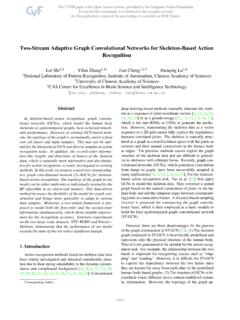
![arXiv:1801.07455v2 [cs.CV] 25 Jan 2018](/cache/preview/c/1/f/1/b/a/a/5/thumb-c1f1baa5f6e090b207f4f18380d23ecd.jpg)

